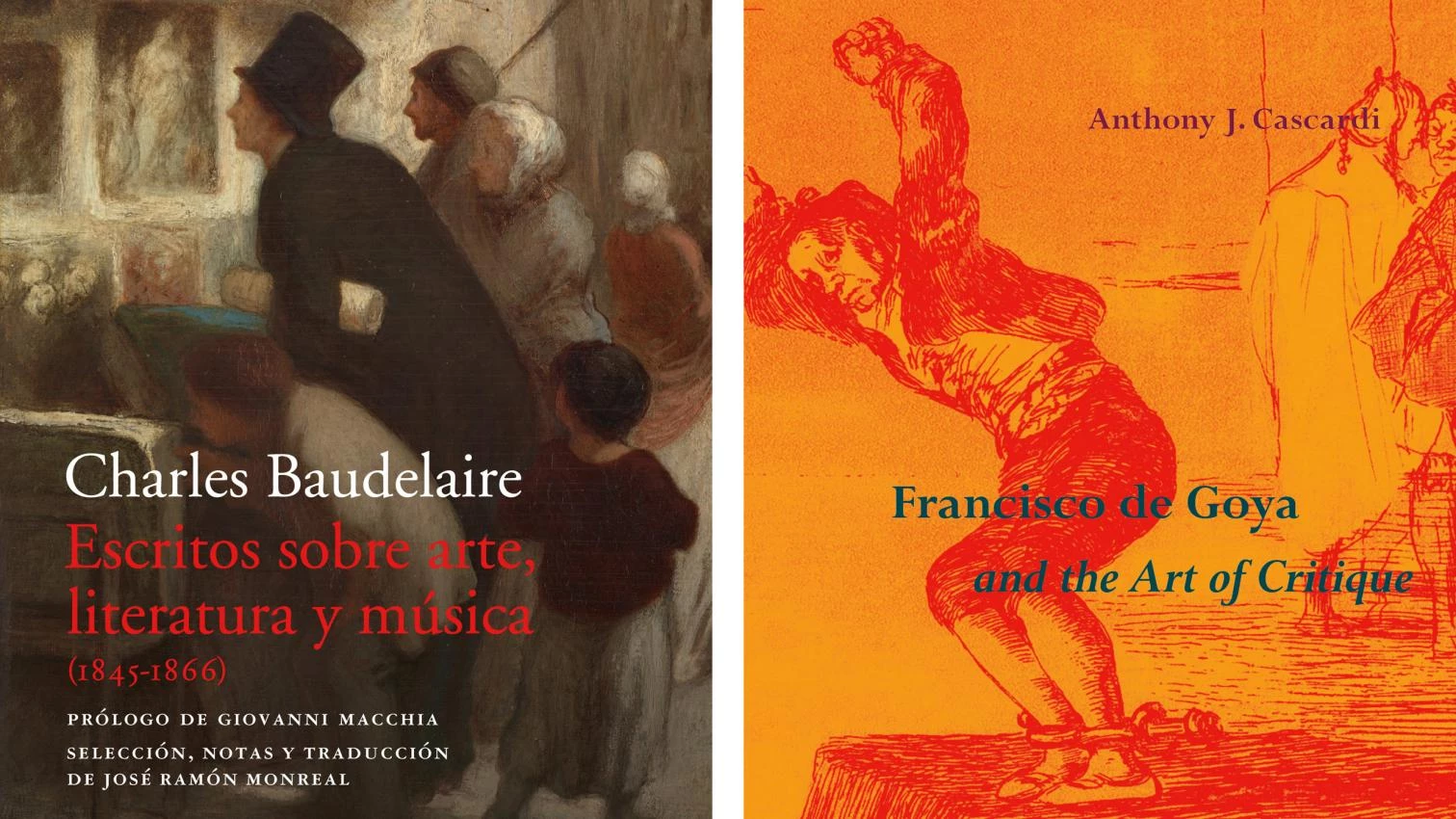
Baudelaire’s critique of art and Goya’s art of critique throw light on the link between painting and writing. Although since Vasari’s Lives many have written on the art of their times, Denis Diderot is attributed with having created the genre of art criticism through his chronicles on works displayed in Parisian salons, an activity which a century later would have its quintessence in the poet Charles Baudelaire. The Selected Writings on Art and Literature contains essays penned after the 1845, 1846, and 1859 salons, besides the text on the 1855 Paris World’s Fair and the influential 1863 article ‘The Painter of Modern Life,’ which dealt with Constantin Guys, a painter and illustrator acclaimed as the chronicler of his epoch. The book also includes an 1857 piece on ‘Some caricaturists,’ where Goya appears alongside Hogarth and Brueghel.
“New horizons in the comic have been opened up in Spain by a most extraordinary man,” wrote Baudelaire about Goya, “always a great artist, frequently a terrifying one.” Commenting on Los Caprichos, he points out that through plausible monsters impregnated with humanity, Goya combines the jovial satire of Cervantes with a much more modern spirit. And on The Bulls of Bordeaux, produced late in the painter’s life, Baudelaire states that “they are new evidence in support of that special law that governs the destiny of great artists, and which, opposing life and intelligence, they gain on one side what they lose on the other, so being progressively younger, grow in audacity until the grave.” This is the Goya of ‘I am Still Learning,’ the Goya whose late work reached the highest realms of spiritual depth and critical ambition.
Goya was successively Rococo, neoclassical, and pre-romantic, and many have compared the luminous painter of tapestry cartoons with the dark creator of The Disasters of War or The Black Paintings, judging only these final works genuinely modern. But Anthony Cascardi argues in Francisco de Goya and the Art of Critique that the artist’s entire oeuvre is a critical reaction to the world he lived in: its politics, religion, and even its means of representation. This modernity of Goya, claimed as precursor by the romantics, impressionists, expressionists, and even surrealists, is a manifestation of the spirit of the Enlightenment, but also an indictment – in works like The Third of May – against the barbarity that the very Enlightenment could also harbor. Writing from this critical angle, Cascardi goes through the artist’s whole career, from the religious paintings to The Milkmaid of Bordeaux, punctuated by episodes like the comparison between Goya’s frescoes in St. Anthony of La Florida and Tiepolo’s in the Royal Palace, or the moving commentary on the Self-portait with Dr. Arrieta.
If Goya was a sublime example of the art of critique, Baudelaire was a hallmark of the critique of art, and these two volumes published in auspicious simultaneity engage in a necessary and serendipitous dialogue.








